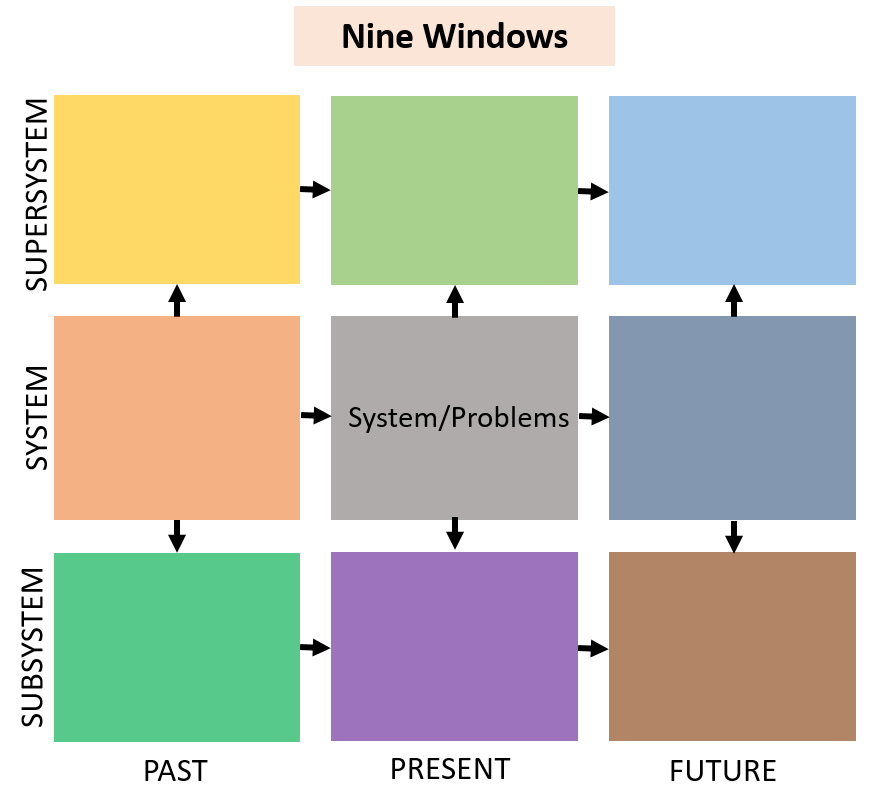In a world that demands constant innovation and unique problem-solving skills, finding effective techniques to unleash creativity is essential. Enter the Nine Windows Technique, a powerful tool that can transform how you approach challenges and tap into your problem-solving potential. Developed by renowned creativity expert Dr. Betty Edwards, this technique combines the power of visual thinking and lateral brainstorming to unlock new perspectives and generate innovative solutions. In this blog post, we will delve into the intricacies of the Nine Windows Technique, exploring how it can enhance your problem-solving abilities and ultimately empower you to approach any obstacle with a fresh and inventive mindset. Prepare to set your imagination free and begin an adventure filled with boundless opportunities.
Table of Contents:
- What is Nine Windows Technique?
- How Nine Windows Technique work?
- Using Nine Windows Technique
- Benefits of Nine Windows
- Nine Windows Example
- What is TRIZZ?
- Steps of TRIZ
- Conclusion
1. What is Nine Windows Technique?
The Nine Windows Technique, or the 9 Windows Model, is an Idea creation tool for promoting ongoing innovation in organizations, teams, and individuals, fostering the creation of new approaches for systems, services, and products. It involves examining the past, present, and future of both high-level areas and their related subsections to gain a holistic understanding of a given system, problem, or situation. This technique is commonly used to facilitate strategic planning, decision-making, and innovation.
It is represented as a three-by-three matrix that visually portrays the evolution of a system in both spatial (vertical direction) and temporal (horizontal direction).
2. How Nine Windows Technique work?
The nine windows technique involves exploring issues and their potential effects by investigating the past, present, and future in main categories and their subparts. It helps adjust object parameters based on conditions, time, and environment. This approach combats psychological inertia from repeating the same actions without expecting different results.
The eight routine causes of psychological inertia:
- Fixed vision or model of the solution.
- False assumptions and unquestioned data.
- Specific terminology reinforcing existing norms.
- Reliance on past experiences and results.
- Knowledge and resources are needed.
- Inflexibility and stubbornness.
- Repetitive use of the same strategy.
- Rushing to a solution without thorough analysis.
3. Using Nine Windows Technique

To apply the Nine Windows Technique, follow these steps:
Create the Grid:
Begin by crafting a 3×3 matrix, with the problem and the current system placed in the center square.
Levels of Exploration:
Delve into the problem at three distinct levels:
- Super-system
This top row examines the external environment and the elements with which the problem or system interacts or potentially interacts.
- System:
The middle row focuses on the problem or system itself, its origin (Past/System cell), and the desired outcome after a solution (Future/System cell).
- Subsystem:
The bottom row addresses components or aspects of the problem or system.
Completing the Rows:
To complete the System row, detail what initiated the problem in the Past/System cell and express the ideal project destination post-solution in the Future/System cell.
Super-system Row:
In the Super-system row, start with actions to prevent the current problem in the Past/Super-system cell. Then, list actions to rectify the problem moving forward in the Future/Super-system cell.
Past and Future Exploration:
After examining the problem and the system in the present:
- Shift your focus to the past and future.
- In the Past/Subsystem cell, specify actions that could have been taken in the past to avert the problem.
- In the Future/Subsystem cell, outline actions to address the problem in the future if it persists.
Exploring All Nine Windows:
Explore all the nine windows by asking:
- Can we act ahead to prevent or enhance?
- Are future steps to mend or defend our stance?
- Are current actions sound for an immediate advance?
This comprehensive exploration through all nine windows facilitates a multifaceted perspective on the issue, allowing for innovative problem-solving and system enhancement.
4. Benefits of Nine Windows
- Challenges traditional problem-solving methods.
- Enhances brainstorming and idea generation.
- Promotes open-mindedness and adaptability.
- Uncovers hidden solutions and possibilities
5. Nine Windows Example
To better understand how the Nine Windows Technique works, let’s consider an example. Imagine a marketing team tasked with creating a new advertising campaign for a product. Using the Nine Windows Technique, they can approach the project from various angles, leading to a more innovative and effective outcome.
In this method, the item or activity to be planned sits at the center (system level), while past and future goals guide the planning process. The Nine Windows Technique helps ensure that the entire system, super-system, and subsystem align to achieve desired results.

In this example, the focus is on enhancing team building and collaboration. The planning begins with an assessment of the past, looks at the current issues, and envisions the desired future state for the team.
6. What is TRIZZ?

TRIZ, or the Theory of Inventive Problem Solving, is a systematic problem-solving and innovation methodology developed by Genrich Altshuller, a Soviet inventor and science-fiction writer, in the mid-20th century. TRIZ is designed to provide a structured approach to problem-solving and innovation by assuming that most problems have already been solved in some form.
The Nine Windows technique is frequently employed within the framework of the Theory of Inventive Problem Solving (TRIZ).
7. Steps of TRIZ
The three main steps in TRIZ are as follows:
- Define the Problem and Contradiction:
Clearly state the problem and identify any conflicting aspects within it.
- System Analysis:
Approach the problem as a system, considering all interactions and stakeholders. Utilize the Nine Windows Technique for a comprehensive analysis over time.
- Apply Powerful TRIZ Principles:
Identify the most relevant TRIZ principles and use them to generate innovative ideas for enhancing the strategy.
8. Conclusion
In conclusion, the Nine Windows Technique is a helpful tool for sparking creativity and improving problem-solving skills. This technique lets you explore issues from different angles and dimensions, encouraging a thorough approach to solving problems. It challenges traditional thinking and helps you stay open to new ideas. By looking at the past, present, and future from various viewpoints, it can uncover hidden solutions and possibilities. Whether you’re working on marketing campaigns, system improvements, or other projects, the Nine Windows Technique helps you approach challenges with fresh and creative thinking, leading to better results.


